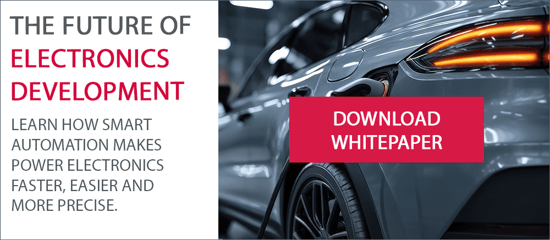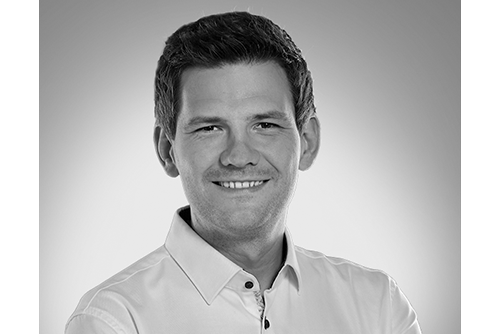Electromobility is booming – and with it, the demands on power electronics are increasing. Whether in electric vehicles, commercial vehicles, ships, or industrial applications, systems such as inverters and DC/DC converters must not only be more powerful today, but also more compact, more efficient, and faster to develop. At the same time, pressure is growing on OEMs and suppliers to shorten development times without compromising quality. The industry is facing a paradigm shift.
The new claim: "China speed with German quality"
"China speed with German quality" describes the demand to no longer view speed and the highest engineering quality as opposites. For our customers, this means that development processes must be rethought, consistently digitized, and efficiently orchestrated.
As a global engineering service provider with over 9,100 employees at more than 80 locations worldwide, we create development environments that combine speed and quality – through model-based development, automated test processes, and digitally networked collaboration across all project phases.
In the field of power electronics, we offer a comprehensive, accelerated development process as a one-stop solution provider for drive inverters, DC/DC converters, and power electronic systems: from concept design to design and industrialization to testing and small-batch production. For our customers, this means shorter time-to-market, reduced interface risks, and the certainty of being able to realize complex projects from a single source and at the highest level of quality.
The challenges of modern power electronics
The development of modern power electronics systems is more complex than ever. Requirements for power density, efficiency, and reliability are constantly increasing, while the available installation space is shrinking and thermal constraints are becoming more demanding.
New semiconductor technologies such as silicon carbide (SiC) and gallium nitride (GaN) enable higher switching frequencies and efficiencies, but increase complexity in design, simulation, and thermal management. At the same time, time and cost pressures are growing. Traditional, manual development processes are increasingly reaching their limits – iteration loops cost time and money and harbor potential for error.
The consequences of insufficient optimization are serious: oversized housings, higher material costs, longer development cycles, and lower energy efficiency. In a highly competitive environment, this means missed market opportunities.
Rethinking development: automation as the key
An innovative development approach combines traditional methods with current technologies. Instead of relying solely on manual processes and empirical knowledge, can be based on an automated approach supported by AI. The entire development process – from the initial idea to the finished prototype – is digitized and accelerated. 
Fig. 1: Extended agenda of the V-model
Even in the early development phase, automated processes generate hundreds of variants. AI recognizes patterns, evaluates options, and suggests specific improvements. The added value:
- Greater speed: variant development in minutes instead of hours.
- Better decisions: AI provides intelligent optimization suggestions.
- Greater efficiency: Development cycles are significantly shortened.
- Targeted innovation: Classic engineering work becomes data-driven improvement.
This platform, in combination with automated development processes, enables rapid adjustments, fast prototype production, and efficient implementation of customer-specific requirements. This turns a development tool into a real accelerator for innovation.
More speed, less effort, better products
What does this mean in concrete terms for OEMs and suppliers? Development time is reduced from weeks to hours, the variety of variants increases exponentially, and the quality of results is significantly improved through data-based decisions. At the same time, costs are reduced – not only through less material usage, but also through lower personnel costs for repetitive tasks.
Engineers can once again concentrate on what they do best: developing creative solutions instead of working their way through manual routines. Automation creates freedom – and ensures better products in less time.
A changing development culture
The future of power electronics requires more than just speed. It requires an intelligent combination of automation, simulation, and engineering expertise. EDAG shows that this combination is not only possible, but that bundling digital solutions and automation also reduces personnel costs and makes development more economical.
Automated processes result in highly optimized designs that are requirement-focused and can meet all safety and quality-related requirements through frontloading. At the same time, resource efficiency is increased – through reduced material usage, lower weight, and higher energy efficiency.
Why EDAG is becoming a game changer
By combining engineering expertise, AI, and automation, EDAG is redefining the standard for the development of power electronics. The company offers OEMs and system suppliers not only engineering services, but also a real competitive advantage:
- Fast development cycles through end-to-end automation
- Optimized solutions for complex design spaces
- Prototyping and small series production expertise under series conditions
- Sustainable efficiency gains through resource conservation
What began as an internal tool is now a central component for better products in less time – and the next step on the road to fully automated electronics development.
Would you like to learn more about how AI and automation are specifically changing the development of high-performance electronic systems – and which methods and technologies are used to achieve this? Then please contact our expert Andreas Viehmann, Project Manager Energy Systems & Powertrain, or download our white paper "Automated Development in Power Electronics – EDAG's Holistic Approach" here!






